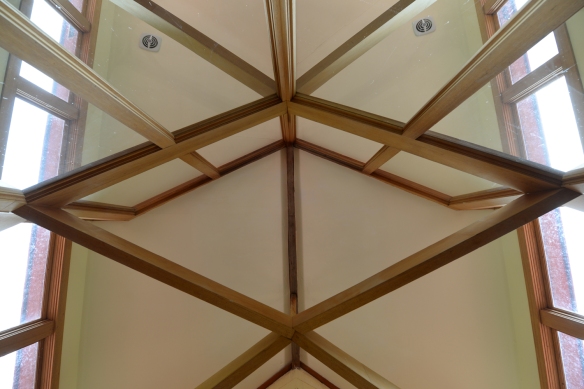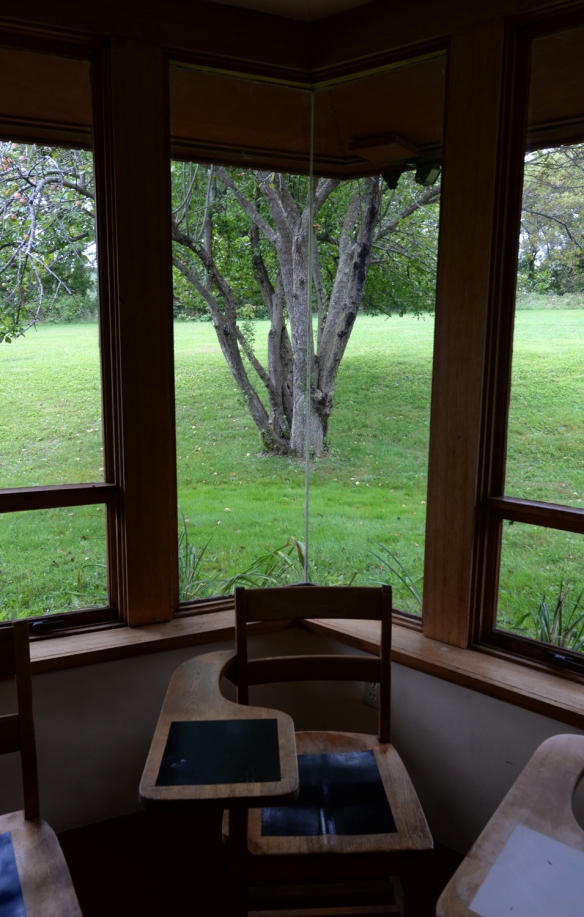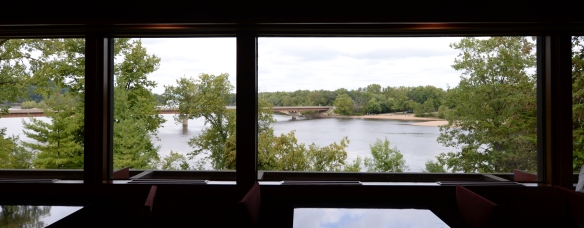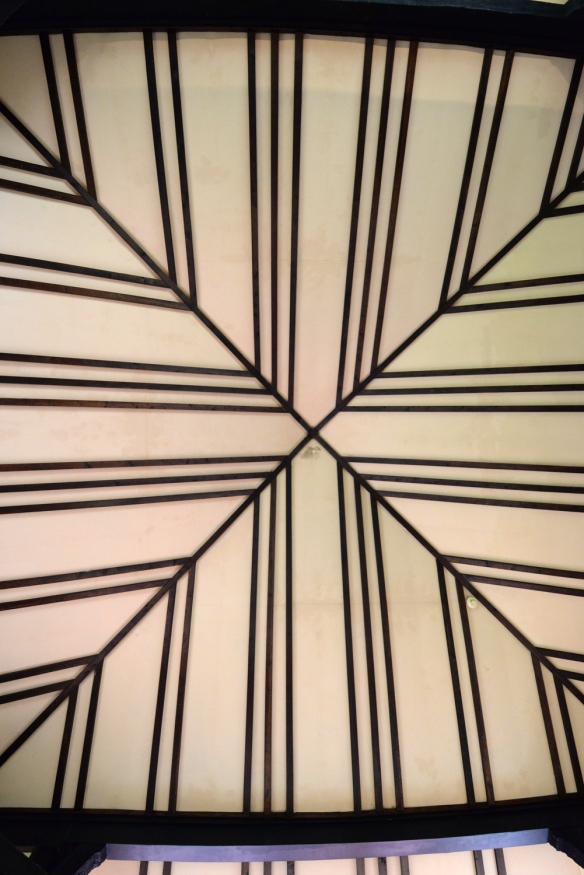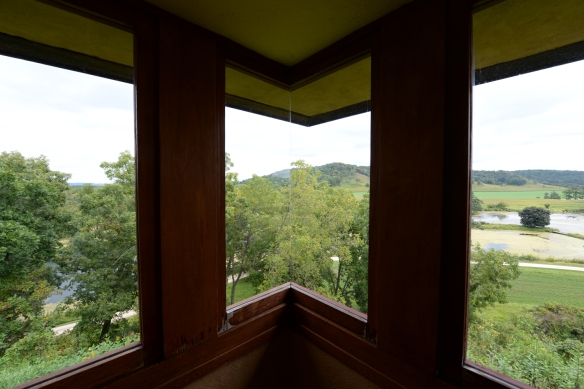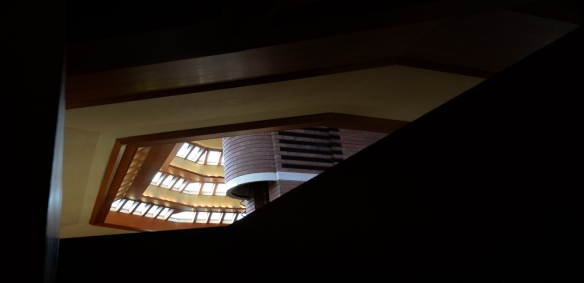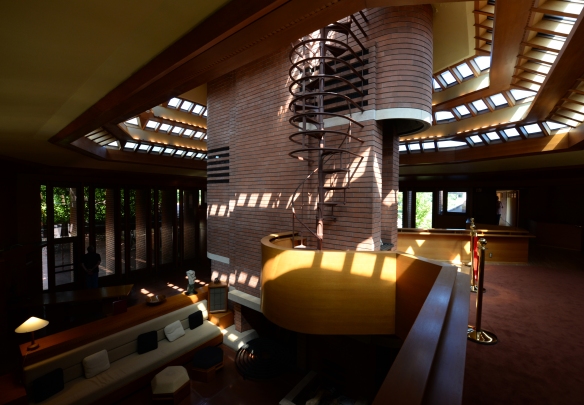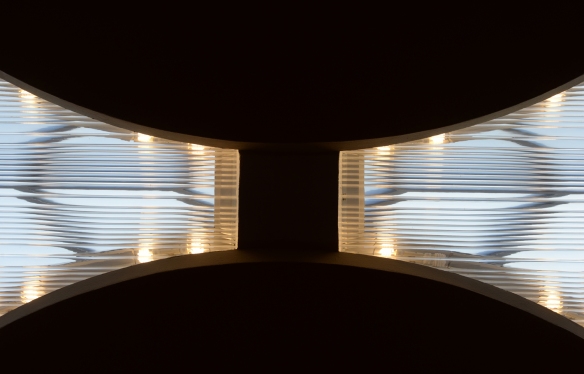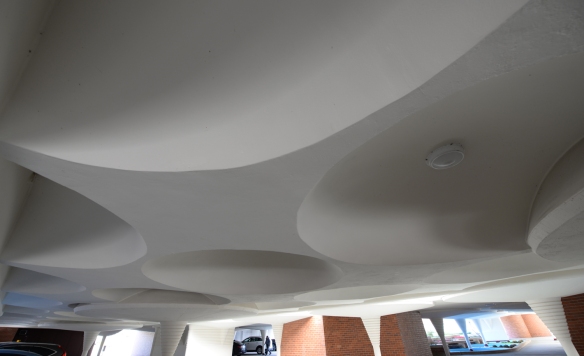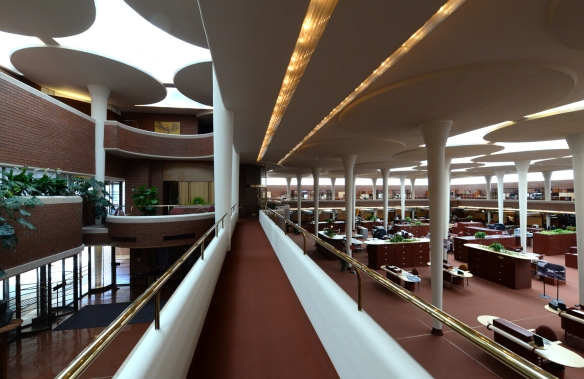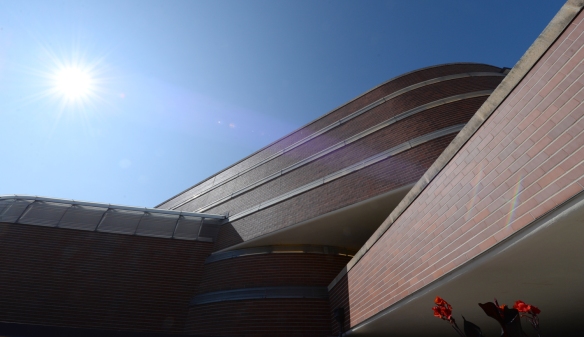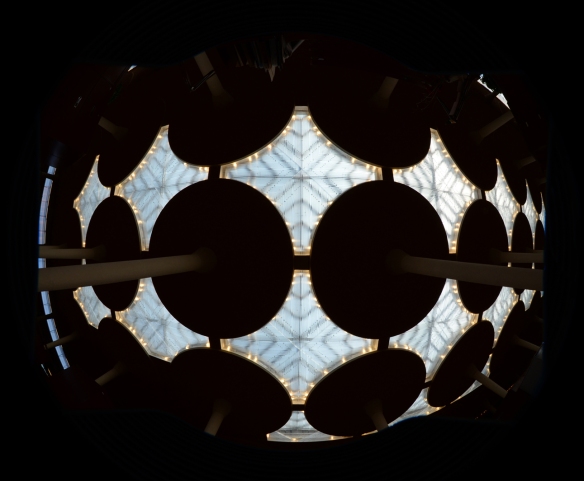(c) Mark Hertzberg (2020)

Karen and Bill – August 16, 2008 at Lake Owen, Wisconsin, their summer home
One way to become steward of a home designed by Frank Lloyd Wright is to marry into it. That is how Bill Boyd came to be a steward of the Keland House in Mount Pleasant (Racine), Wisconsin in 1982. He joked with me that he was accused of marrying his late wife, Karen Johnson Boyd, for just that reason. She and her first husband had commissioned the house in 1954. Bill, who was properly called Dr. William B. Boyd, and WBB to those who worked with him, died peacefully Wednesday December 16 in his beloved Keland House after a short illness. He was 97. His dear Karen had died in the house in January 2016.
 The Keland House, May 14, 2018
The Keland House, May 14, 2018
Bill told me that he had never seen a building designed by Wright until he came to Racine in 1980 for an interview to become the second president of The Johnson Foundation at Wingspread, the Johnson home that Karen grew up in. Wingspread was designed by Wright in 1937. The interview, with Karen’s brother, Sam, the president of SC Johnson, took place in Wright’s landmark SC Johnson Administration Building (1936). Bill summed up his initial reaction to Wright’s architecture in just three words, “I was smitten.”
Wright presented a Japanese print by the famous woodblock print artist Utagawa Hiroshige to H.F. Johnson Jr. when the family moved into Wingspread. The print hangs in the master bedroom in the Keland House:


Bill missed an immersion into the World of Wright in the early 1950s, when he was studying for his Master’s degree at Emory College in Atlanta. He had applied for a position at Florida Southern College in Lakeland. Dr. Ludd Spivey, a teetotaler who commissioned Wright to design the college campus in 1938 (10 Wright-designed buildings were ultimately constructed), was in Atlanta. He invited Bill to a lunch interview. Dr. Spivey said, “Before we begin, I must ask you if you drink alcohol.” Bill replied, “I enjoy a drink now and then.” The interview was over. Bill was on his own for lunch after Dr. Spivey rose from the table, and declared “There is no point in our going on any further.” I told him I was glad he enjoyed a drink “now and then.” If he had gone to Florida Southern, I said, he may not have come to Wingspread, and I would not have met him.
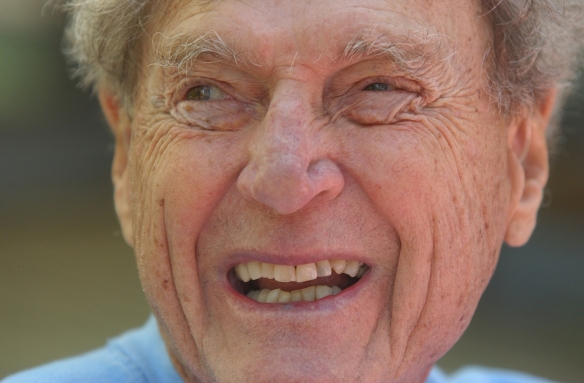 August 14, 2008, Lake Owen, Wisconsin
August 14, 2008, Lake Owen, Wisconsin
He had a distinguished career in academia, though not at Florida Southern, of course. He was President of the University of Oregon for five years before coming to Wingspread. His academic career is summed up in the obituary he asked me to prepare with him five years ago: Dr. Boyd, who earned his Ph.D. in Modern Diplomatic History from the University of Pennsylvania in 1954, was awarded five honorary degrees during his career. He was also a member of the Phi Beta Kappa and Phi Alpha Theta national honor societies. Between 1954 and 1980 he served in the Humanities Department at Michigan State University; then as Dean of Faculty at Alma College; as a Dean and Director of the Honors Program at Ohio State University; Vice-Chancellor of the University of California, Berkeley; and as President of Central Michigan University prior to his appointment as President of the University of Oregon in 1975.
He was not a dull academic. On the contrary, he had great joie de vivre.
 August 10, 2016, on Lake Owen
August 10, 2016, on Lake Owen
A Navy veteran of World War II and the Korean War, he grew up on the water near Charleston, South Carolina, and loved sailing both on Lake Michigan in Racine, and on Lake Superior in northern Wisconsin.
 Karen and Bill on Lake Owen, Wisconsin, August 14, 2008
Karen and Bill on Lake Owen, Wisconsin, August 14, 2008
When the producers of the movie Animal House sought permission to film on campus at the University of Oregon, he gave his consent, recalling what he regarded as the short-sighted decision by the administration at UC-Berkley denying Mike Nichols permission to film The Graduate on their campus. His only proviso was that the school not be identified in the film. The famous scene with the horse in the president’s office was, indeed, filmed in his office. Karen once told me that her favorite scene of any movie she had seen was the food fight in Animal House. I profiled Bill and Animal House two years ago:
https://racinecountyeye.com/dr-william-b-boyd-and-his-connection-to-the-movie-animal-house/
 Bill wore his Oregon Ducks hat when I profiled his involvement in “Animal House”
Bill wore his Oregon Ducks hat when I profiled his involvement in “Animal House”
Bill had a great social conscience. He told me that he was angered by then-California Gov. Ronald Reagan’s attempts to stifle free speech at Berkley when Bill was the school’s Vice-Chancellor. At the press conference October 12, 1974 introducing him to the University of Oregon community, he said demonstrators outside were “ill-mannered … but manners are not the most important thing in life,” adding that sometimes “passion and tremendous concern for social justice” are just as important.
Buffy Sainte-Marie performed at the festivities surrounding Bill’s inauguration as President of Central Michigan University in 1969. The event was remembered 50 years later in a story online: Not often does a university president offer students an afternoon off from classes to attend an “informal ceremony,” a reception, and a concert performed by a legend of activism and folk music. Fifty years later, the Boyd inauguration is remembered as a notable moment in the history of Central Michigan University, when the students, the trustees, and the President opted to forego pomp and circumstance in favor of “a ‘swinging’ ceremony.” From:
http://www.clarkehistoricallibrary.org/2019/05/fiftieth-anniversary-of-president-boyds.html
He spoke with pride of clandestinely delivering what would have been deemed subversive material to a Jewish “refusenik” in Moscow during a conference in the Soviet Union in the 1980s.
He was passionate about Racine’s Kids First Fund. Wrote Marge Kozina, I have been very fortunate to have had the wonderful opportunity of working closely with William Boyd (Bill) for many years when I was executive director of the Racine Community Foundation (RCF) and Bill was a board member. He was the leading force, along with several others, in helping create and grow the Kids First Fund within the Foundation. Bill’s dedication and leadership in the early years have benefitted thousands of students and hundreds of teachers within the Racine Unified School District. He is deeply committed to enhancing the lives of others through education. Bill Boyd is one of the nicest and caring gentlemen I have ever met in my life. Both Bill and Karen, each in their own special way, have made enormous efforts to bettering our community.
 September 27, 2018, hosting a special dinner cooked by Wright aficionado and master chef Steven Freeman. It was a joyous evening, marking Bill’s first meal at the dining room table in the Keland House since Karen’s death almost three years earlier.
September 27, 2018, hosting a special dinner cooked by Wright aficionado and master chef Steven Freeman. It was a joyous evening, marking Bill’s first meal at the dining room table in the Keland House since Karen’s death almost three years earlier.
Journalist Clay Eals, who covered the University of Oregon for The (Portland) Oregonian newspaper, quoted part of Bill’s presidential inauguration speech in the January 18, 1976 edition of the newspaper. His remarks seem prescient today: A changed set of American expectations about life in the third century of the republic, the constricted state of the national economy, and the fears of a student generation viewing an anxious future from a normless present all pose challenges to the existing shape of the university….As usual in human affairs, discriminating judgments are required if human intellect and imagination are to prevail over temptations and anxieties.
In an email sent after he learned of Bill’s death, Eals called him “a reporter’s dream.” He included a clipping of a story about Bill being interviewed in the middle of a scandal in the athletic department. He opened his briefcase to refer to some papers only to find a pair of pants inside. “I’ve been trying to get them to the dry cleaners for a week,” he said. “And I haven’t had a clean shirt for days.”
Eals wrote to Bill in June 2020, including a copy of the last story he wrote for the newspaper in June 1980, a story about Bill that he wrote in longhand in his car, literally the night before leaving on a cross-country bicycle trip. Among my favorite news sources was you, and I had many occasions to cover stories in which you were an important, if not primary, source. Your cool informality, sense of humor, and way with words were most impressive. Seemingly effortlessly, you set people at ease.
Ellen Brzezinski, one of Bill’s nurses, sent family members and Eals’s letter with this note: Mr Boyd got this letter in the mail today. I read it to him and barely made it through without crying. What a tribute!
Roger Dower, one of Bill’s successors at President of the Johnson Foundation, noted his lasting impact on the institution: Bill had a diverse and sharp intellect, but also a deep passion and caring for improving the lives of people nationally and in Racine. His programs and conferences at the Johnson Foundation on the critical role of quality education for all children, placed that topic squarely on the national and local agenda. The Foundation’s work on K-12 education, under Bill’s direction, remains as influential today as it was in the mid-1980’s and remains a focus for the Foundation today.
Bill believed deeply in the power of convening small groups to solve big problems – the principal activity of the Johnson Foundation at Wingspread then and now. With his usual eloquence, Bill frequently said, “ while small group meetings may seem like frail weapons to take on the daunting challenges of our times, just properly used they can slay dragons.”
 Bill gave me my first extensive tour of the Keland House on November 1, 2002. He saw this nuthatch through the window, when we paused on the steps, and remarked, “This is what I love about living in this house.”
Bill gave me my first extensive tour of the Keland House on November 1, 2002. He saw this nuthatch through the window, when we paused on the steps, and remarked, “This is what I love about living in this house.”
 In January 2019 I photographed this silhouette of the birds outside as we had lunch together in the family room.
In January 2019 I photographed this silhouette of the birds outside as we had lunch together in the family room.
Stacy Owens, Bill’s lead nurse, told me that Bill died peacefully, and that “he saw Karen just before he died.” Rest in peace, my friend. The world is richer for having known you.
I leave you with a photograph I took of the refrigerator at the Keland House when we were getting ready to enjoy Steven Freeman’s dinner:







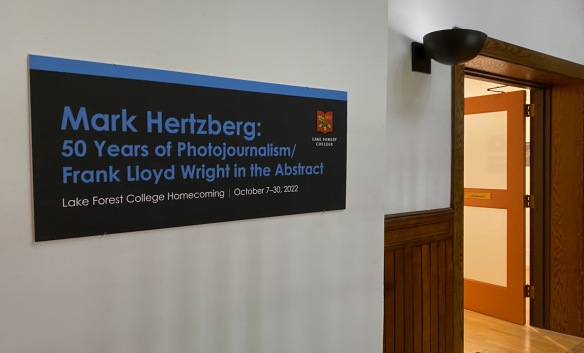
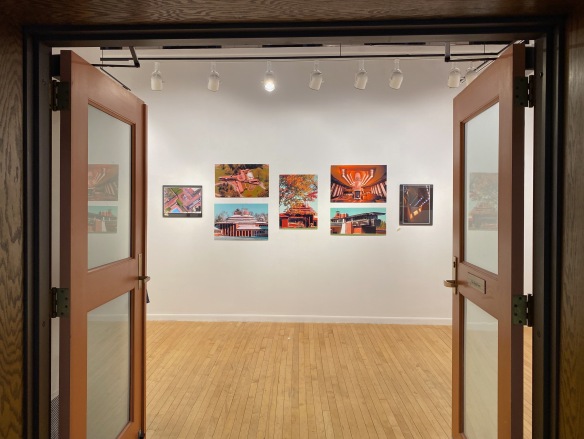
 Annunciation Greek Orthodox Church, Wauwatosa, Wisconsin, 1956
Annunciation Greek Orthodox Church, Wauwatosa, Wisconsin, 1956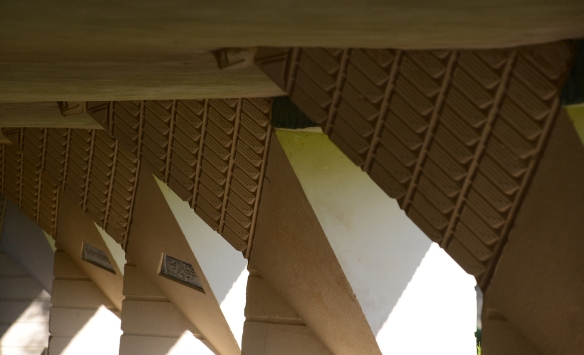 Florida Southern College, Lakeland, Florida, 1938
Florida Southern College, Lakeland, Florida, 1938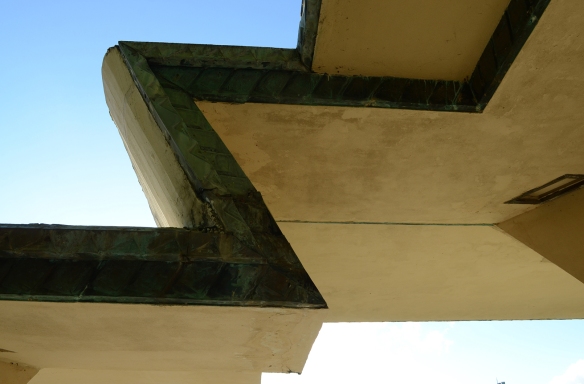 Florida Southern College, Lakeland, Florida, 1938
Florida Southern College, Lakeland, Florida, 1938 Florida Southern College, Lakeland, Florida, 1938
Florida Southern College, Lakeland, Florida, 1938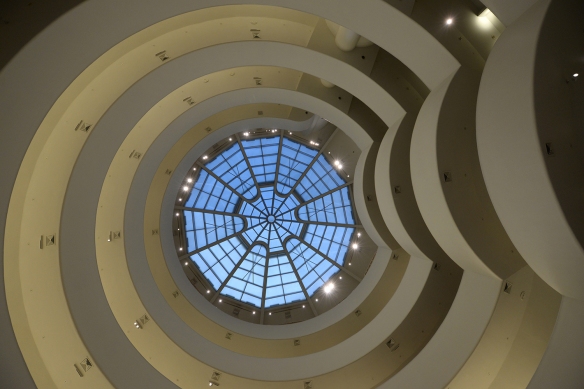 Guggenheim Museum, New York City, 1943
Guggenheim Museum, New York City, 1943 Hillside Drafting Room, Taliesin, Spring Green, Wisconsin, 1933
Hillside Drafting Room, Taliesin, Spring Green, Wisconsin, 1933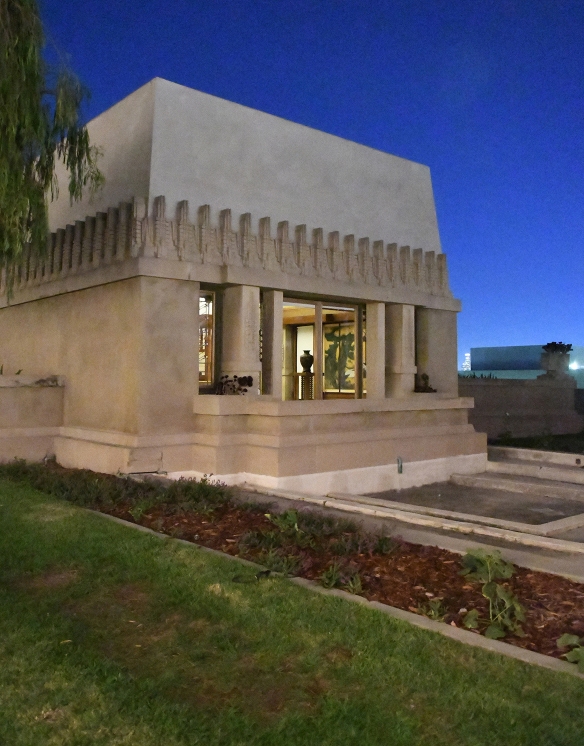 Hollyhock House, Los Angeles, 1919
Hollyhock House, Los Angeles, 1919 Imperial Hotel entry way, Tokyo, 1915, as rebuilt at Meiji Mura near Nagoya, Japan
Imperial Hotel entry way, Tokyo, 1915, as rebuilt at Meiji Mura near Nagoya, Japan Lindholm Service Station, Cloquet, Minnesota, 1956
Lindholm Service Station, Cloquet, Minnesota, 1956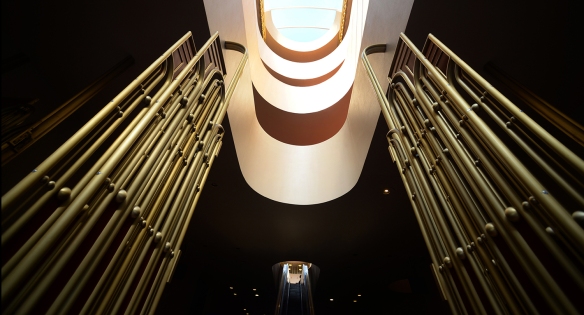 Marin County Civic Center, San Rafael, California, 1957
Marin County Civic Center, San Rafael, California, 1957 Marin County Civic Center, San Rafael, California, 1957
Marin County Civic Center, San Rafael, California, 1957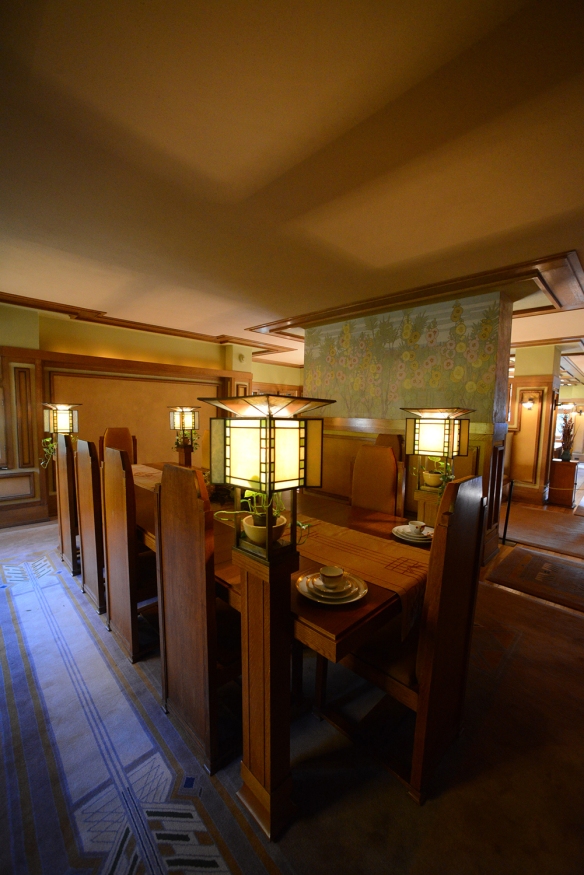 Meyer May House, Grand Rapids, Michigan, 1908
Meyer May House, Grand Rapids, Michigan, 1908 Meyer May House, Grand Rapids, Michigan, 1908
Meyer May House, Grand Rapids, Michigan, 1908 Meyer May House, Grand Rapids, Michigan, 1908
Meyer May House, Grand Rapids, Michigan, 1908 Price Tower, Bartlesville, Oklahoma, 1952
Price Tower, Bartlesville, Oklahoma, 1952 Price Tower, Bartlesville, Oklahoma, 1952
Price Tower, Bartlesville, Oklahoma, 1952 Price Tower, Bartlesville, Oklahoma, 1952
Price Tower, Bartlesville, Oklahoma, 1952 Romeo and Juliet Windmill, Taliesin, Spring Green, Wisconsin, 1898
Romeo and Juliet Windmill, Taliesin, Spring Green, Wisconsin, 1898 SC Johnson Administration Building, Racine, Wisconsin, 1936
SC Johnson Administration Building, Racine, Wisconsin, 1936 SC Johnson Administration Building, Racine, Wisconsin, 1936
SC Johnson Administration Building, Racine, Wisconsin, 1936
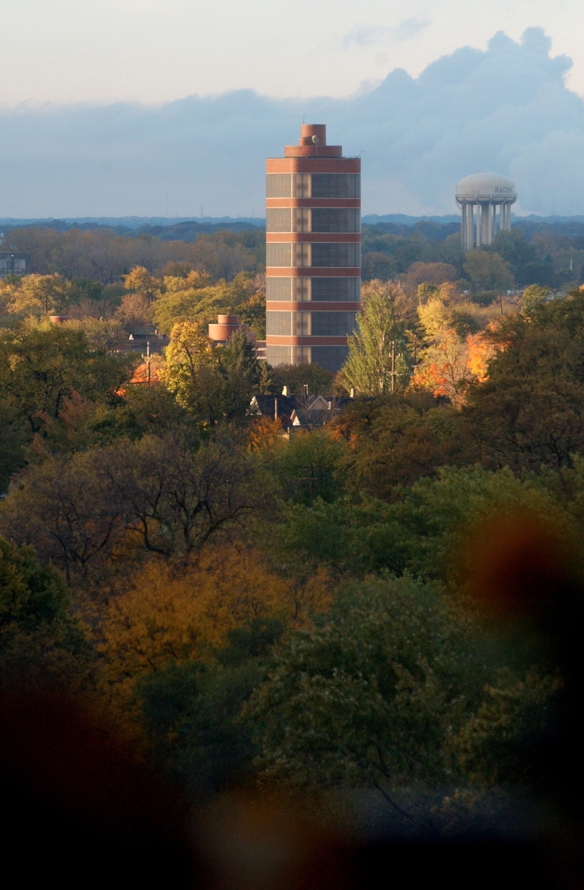 SC Johnson Research Tower, Racine, Wisconsin, 1943/44
SC Johnson Research Tower, Racine, Wisconsin, 1943/44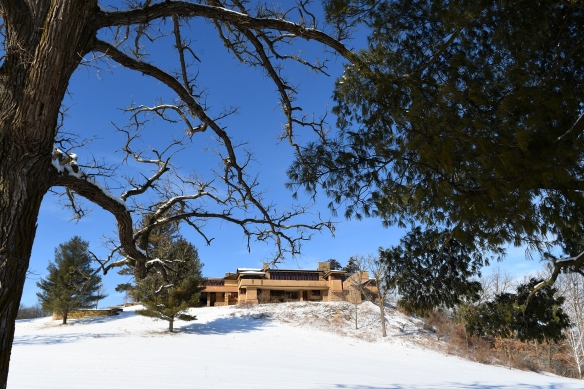 Taliesin, Spring Green, Wisconsin, 1911, 1925
Taliesin, Spring Green, Wisconsin, 1911, 1925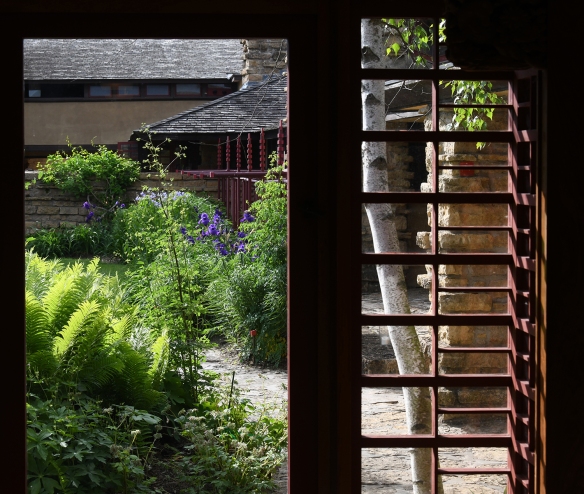 Taliesin, Spring Green, Wisconsin, 1911, 1925
Taliesin, Spring Green, Wisconsin, 1911, 1925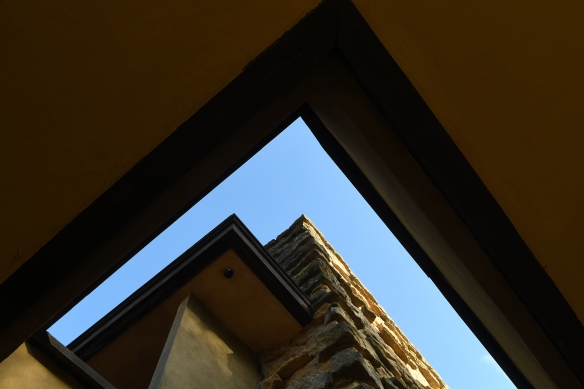 Taliesin, Spring Green, Wisconsin, 1911, 1925
Taliesin, Spring Green, Wisconsin, 1911, 1925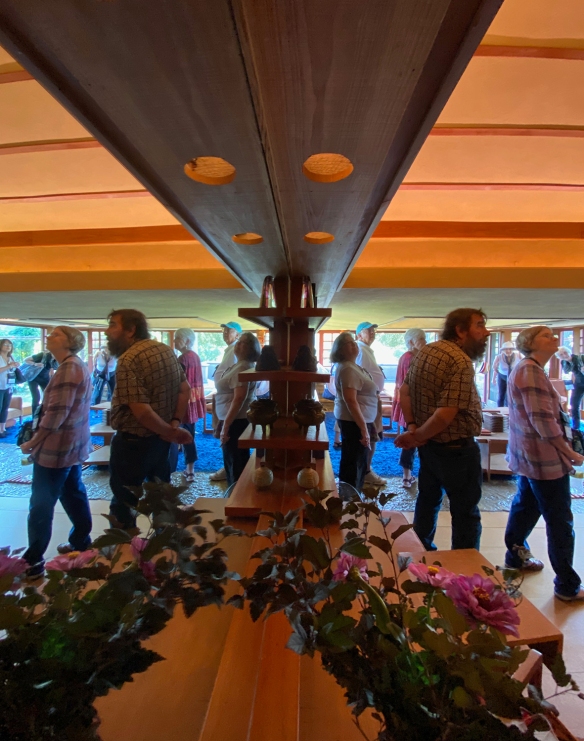 Taliesin, Spring Green, Wisconsin, 1911, 1925
Taliesin, Spring Green, Wisconsin, 1911, 1925 Thomas P. Hardy House, Racine, Wisconsin, 1904/05
Thomas P. Hardy House, Racine, Wisconsin, 1904/05 Wingspread, Wind Point, Wisconsin, 1937
Wingspread, Wind Point, Wisconsin, 1937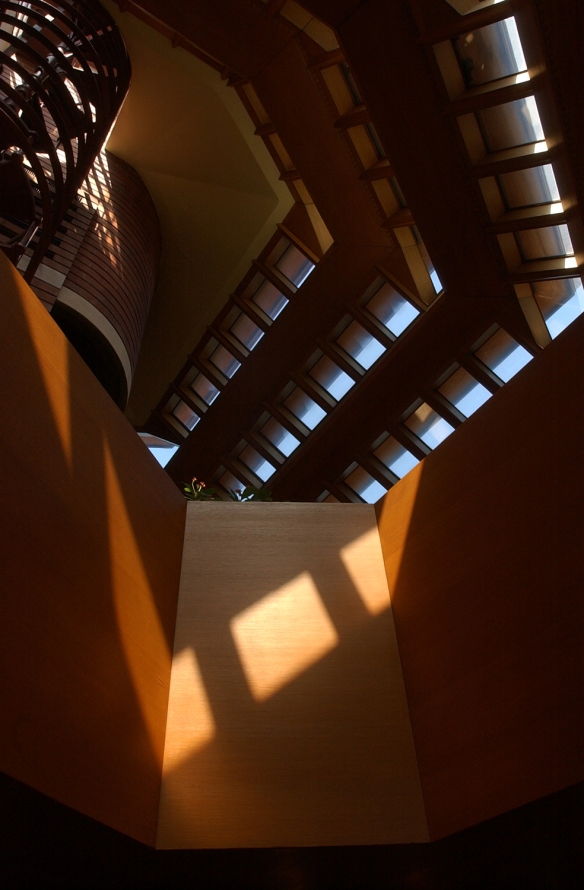 Wingspread, Wind Point, Wisconsin, 1937
Wingspread, Wind Point, Wisconsin, 1937 Visitors to Taliesin framed by the windows of the original drafting studio, 2018.
Visitors to Taliesin framed by the windows of the original drafting studio, 2018.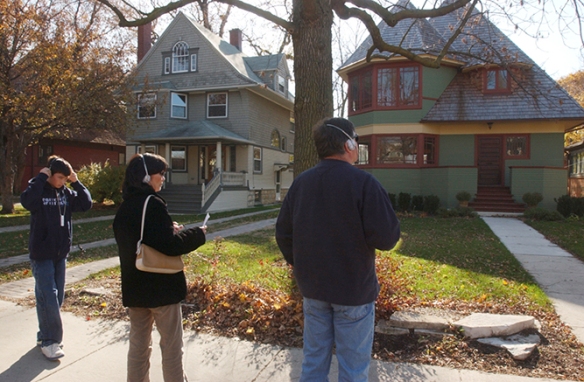 Wright tourists are on a self-guided audio tour in Oak Park in 2005.
Wright tourists are on a self-guided audio tour in Oak Park in 2005. The Hardy House, Racine, in 2013: weather can always be a wrinkle in travel plans.
The Hardy House, Racine, in 2013: weather can always be a wrinkle in travel plans.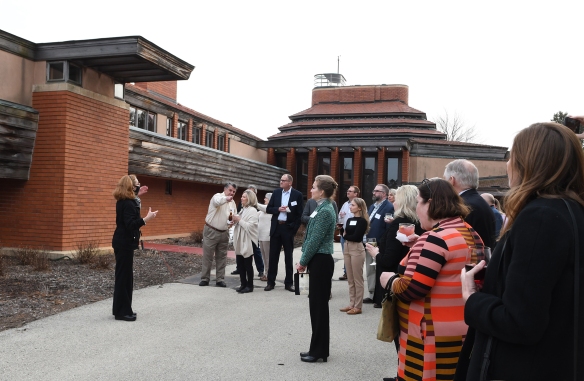

 Anna Kaplan, Graycliff, Derby (Buffalo), N.Y.
Anna Kaplan, Graycliff, Derby (Buffalo), N.Y. Mike Lilek, Frank Lloyd Wright’s Burnham Block, Milwaukee
Mike Lilek, Frank Lloyd Wright’s Burnham Block, Milwaukee Dave Zaleski, Wyoming Valley School Cultural Center; Carrie Rodamaker, Taliesin
Dave Zaleski, Wyoming Valley School Cultural Center; Carrie Rodamaker, Taliesin Gregory Wittkopp from Cranbrook (Smith House), Bloomfield Hills, Michigan
Gregory Wittkopp from Cranbrook (Smith House), Bloomfield Hills, Michigan Karen Ettelson, Glencoe, Illinois Historical Society (Sherman Booth Cottage)
Karen Ettelson, Glencoe, Illinois Historical Society (Sherman Booth Cottage) Ahnquajj Kahmanne, Frank Lloyd Wright Trust (Chicago, Oak Park)
Ahnquajj Kahmanne, Frank Lloyd Wright Trust (Chicago, Oak Park) Libby Jordan, Rosenbaum House, Florence, Alabama
Libby Jordan, Rosenbaum House, Florence, Alabama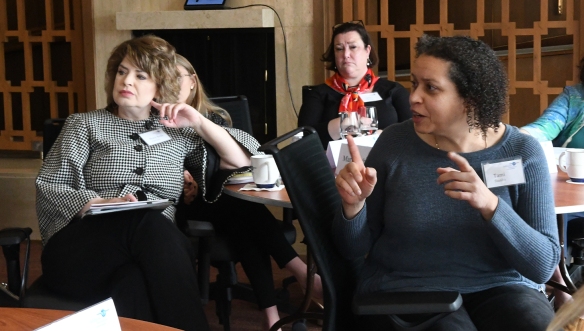 Mary Beth Peterson, Laurent House, Rockford, left; Libby Garrison, Marin County Civic Center; and Tami Stanko, Affleck House, Bloomfield Hills, Michigan
Mary Beth Peterson, Laurent House, Rockford, left; Libby Garrison, Marin County Civic Center; and Tami Stanko, Affleck House, Bloomfield Hills, Michigan Kathryn Hund, Cedar Rock State Park, Lowell and Agnes Walter Estate, Quasqueton, Iowa, left; Peggy Bang, Wright on the Park, Mason City, Iowa; and Heidi Ruehle, Unity Temple Restoration Foundation, Oak Park
Kathryn Hund, Cedar Rock State Park, Lowell and Agnes Walter Estate, Quasqueton, Iowa, left; Peggy Bang, Wright on the Park, Mason City, Iowa; and Heidi Ruehle, Unity Temple Restoration Foundation, Oak Park Tiffany Wade, Price Tower, Bartlesville, Oklahoma
Tiffany Wade, Price Tower, Bartlesville, Oklahoma Vivien Lasken from Fabyan Villa, Geneva, Illinois, left; Tiffany Wade, Price Tower; Kathryn Hund, Cedar Rock State Park, Lowell and Agnes Walter Estate, Quasqueton and, foreground, Ahnquajj Kahmanne, Frank Lloyd Wright Trust
Vivien Lasken from Fabyan Villa, Geneva, Illinois, left; Tiffany Wade, Price Tower; Kathryn Hund, Cedar Rock State Park, Lowell and Agnes Walter Estate, Quasqueton and, foreground, Ahnquajj Kahmanne, Frank Lloyd Wright Trust Stuart Graff, President and CEO, Frank Lloyd Wright Foundation
Stuart Graff, President and CEO, Frank Lloyd Wright Foundation Zaleski, left; Rodamaker; Graff; Don Dekker, Meyer May House, Grand Rapids, Michigan; and Marta Wojcik, Westcott House, Springfield, Ohio
Zaleski, left; Rodamaker; Graff; Don Dekker, Meyer May House, Grand Rapids, Michigan; and Marta Wojcik, Westcott House, Springfield, Ohio

 Bob Bohlmann, Bradley House, Kankakee, Illinois, left; Justin Gunther, Fallingwater; Barbara Gordon, Executive Director, Frank Lloyd Wright Building Conservancy; and March Schweitzer, Unitarian Meeting House, Madison
Bob Bohlmann, Bradley House, Kankakee, Illinois, left; Justin Gunther, Fallingwater; Barbara Gordon, Executive Director, Frank Lloyd Wright Building Conservancy; and March Schweitzer, Unitarian Meeting House, Madison
 Volunteer docent James Wardrip, center, tells visitors about Jacobs 1 in Madison.
Volunteer docent James Wardrip, center, tells visitors about Jacobs 1 in Madison.





 Marcus White turned the tables on me and took pictures of me at work.
Marcus White turned the tables on me and took pictures of me at work. One of the first floor fireplaces is framed by the wood of the balcony
One of the first floor fireplaces is framed by the wood of the balcony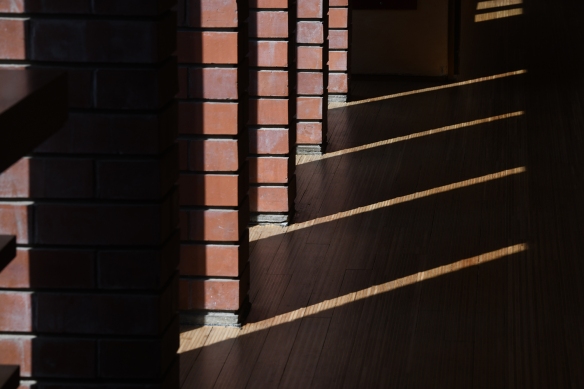 Late afternoon sun skims across the floor outside the master bedroom.
Late afternoon sun skims across the floor outside the master bedroom.


 Had I not been directed to a parking area other than the one I thought I should go to, I would not have seen the sun highlight the crow’s nest when I returned to my car. Note to Marcus…this is why that 300mm lens is in my trunk, ready for action.
Had I not been directed to a parking area other than the one I thought I should go to, I would not have seen the sun highlight the crow’s nest when I returned to my car. Note to Marcus…this is why that 300mm lens is in my trunk, ready for action.
 The Keland House, May 14, 2018
The Keland House, May 14, 2018

 August 14, 2008, Lake Owen, Wisconsin
August 14, 2008, Lake Owen, Wisconsin August 10, 2016, on Lake Owen
August 10, 2016, on Lake Owen Karen and Bill on Lake Owen, Wisconsin, August 14, 2008
Karen and Bill on Lake Owen, Wisconsin, August 14, 2008 Bill wore his Oregon Ducks hat when I profiled his involvement in “Animal House”
Bill wore his Oregon Ducks hat when I profiled his involvement in “Animal House” September 27, 2018, hosting a special dinner cooked by Wright aficionado and master chef Steven Freeman. It was a joyous evening, marking Bill’s first meal at the dining room table in the Keland House since Karen’s death almost three years earlier.
September 27, 2018, hosting a special dinner cooked by Wright aficionado and master chef Steven Freeman. It was a joyous evening, marking Bill’s first meal at the dining room table in the Keland House since Karen’s death almost three years earlier. Bill gave me my first extensive tour of the Keland House on November 1, 2002. He saw this nuthatch through the window, when we paused on the steps, and remarked, “This is what I love about living in this house.”
Bill gave me my first extensive tour of the Keland House on November 1, 2002. He saw this nuthatch through the window, when we paused on the steps, and remarked, “This is what I love about living in this house.” In January 2019 I photographed this silhouette of the birds outside as we had lunch together in the family room.
In January 2019 I photographed this silhouette of the birds outside as we had lunch together in the family room.


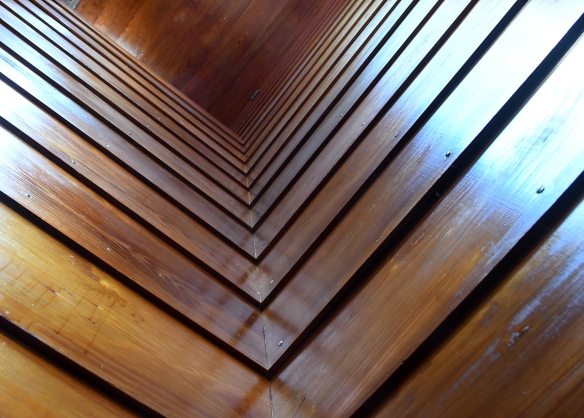

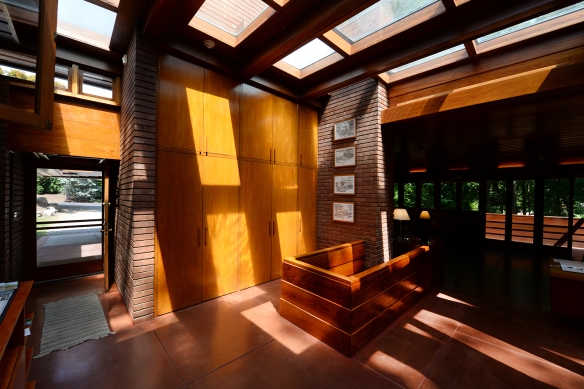

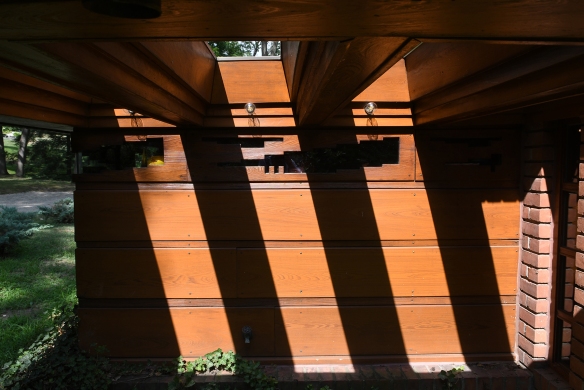
 We planned to stay only a couple of hours and not overstay our welcome, but we were like family enjoying the house in the living room after dinner until past 11 p.m.! The light was harsh when we arrived at 5 p.m., and I wondered how it would change through the evening:
We planned to stay only a couple of hours and not overstay our welcome, but we were like family enjoying the house in the living room after dinner until past 11 p.m.! The light was harsh when we arrived at 5 p.m., and I wondered how it would change through the evening: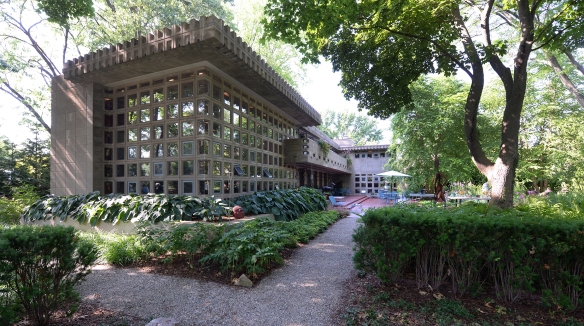
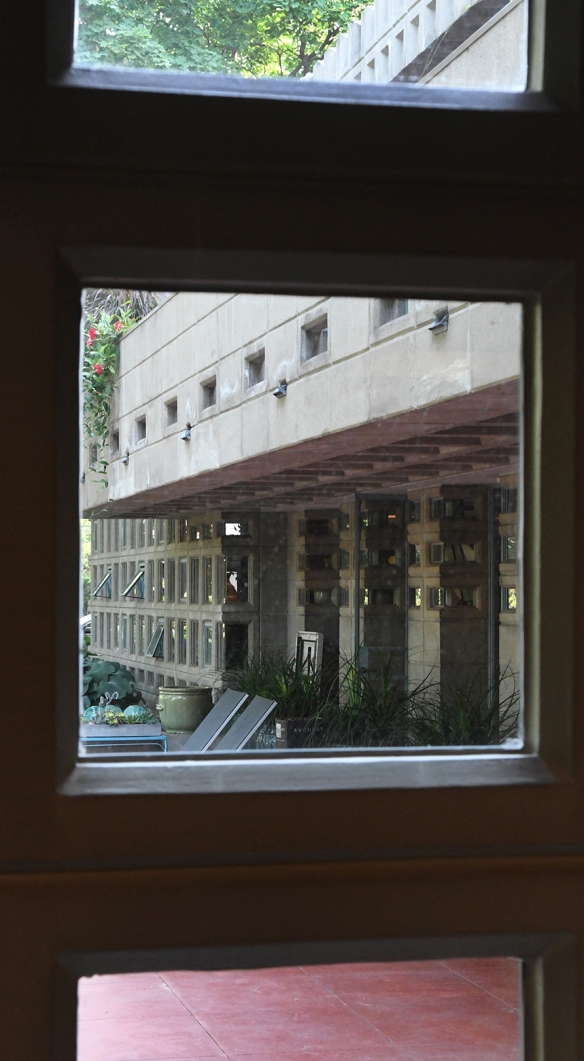


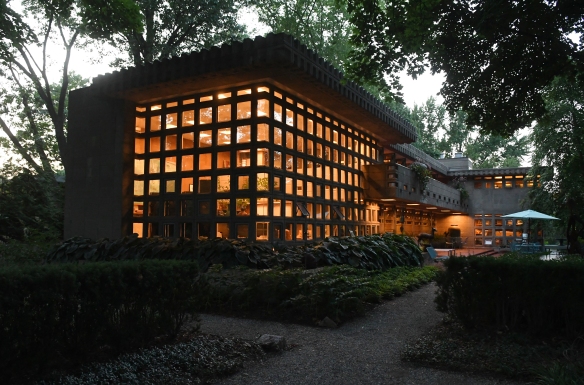



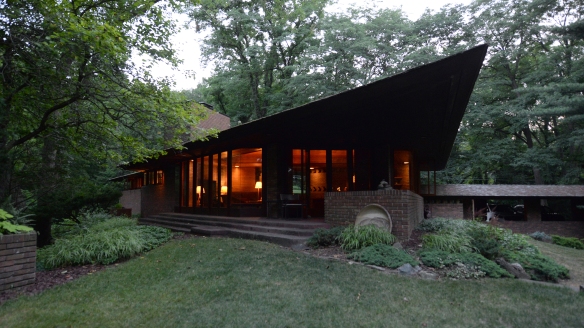



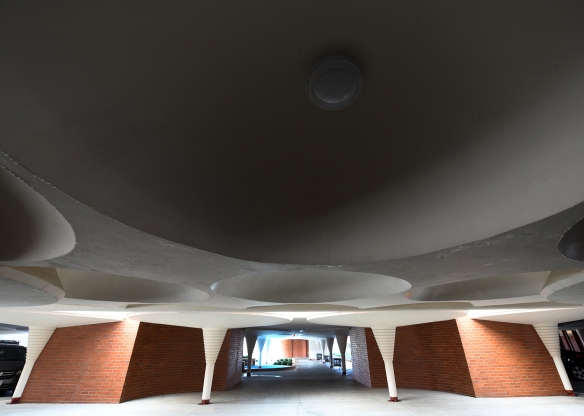
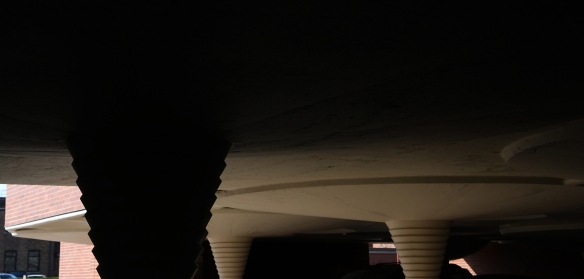
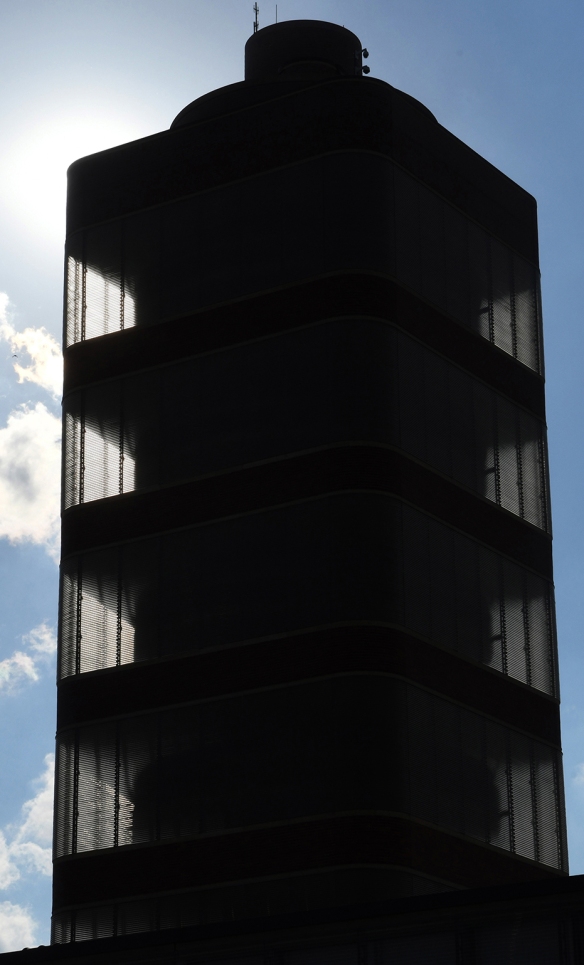

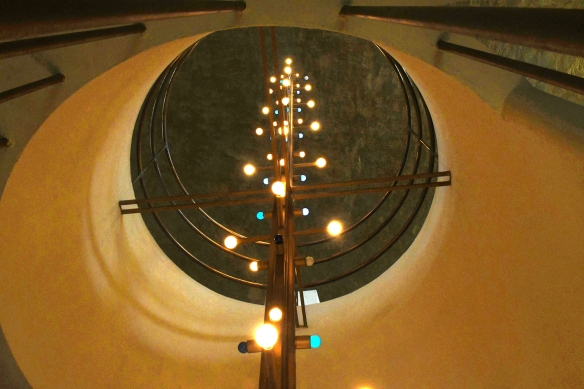

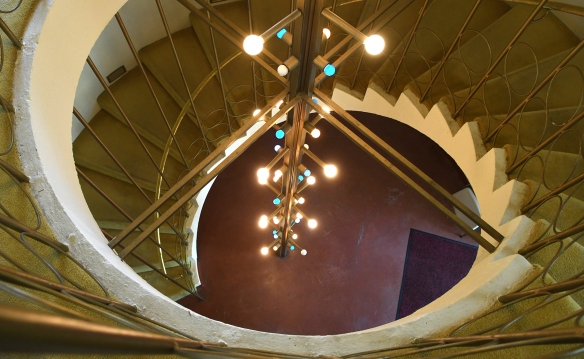



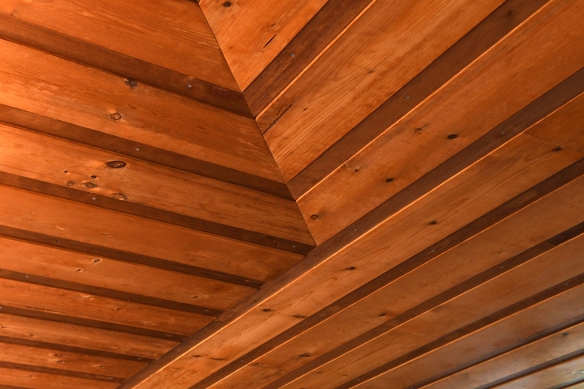
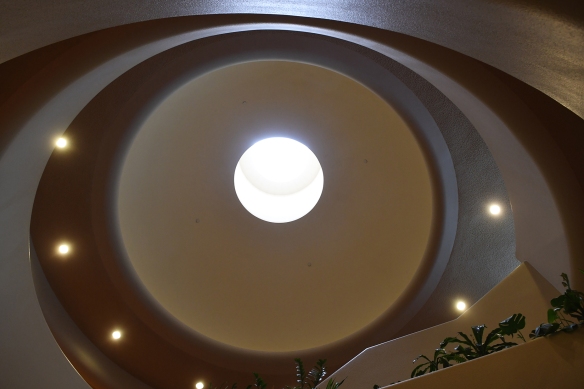
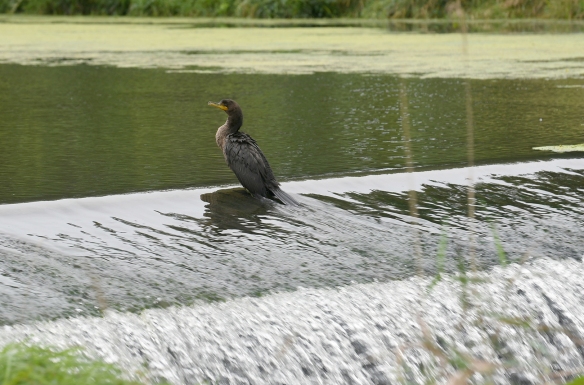
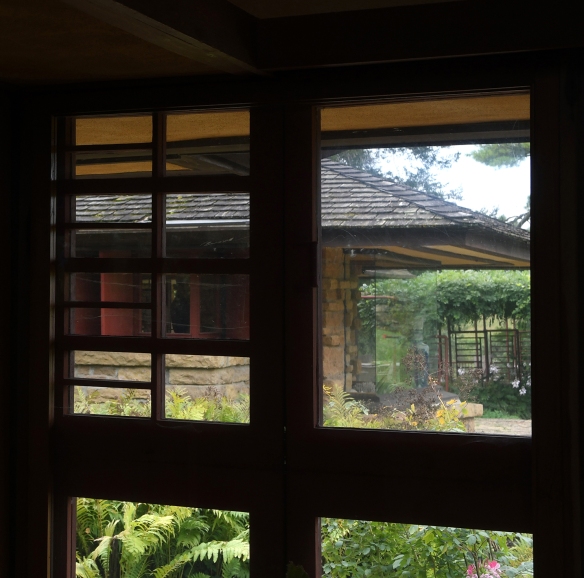
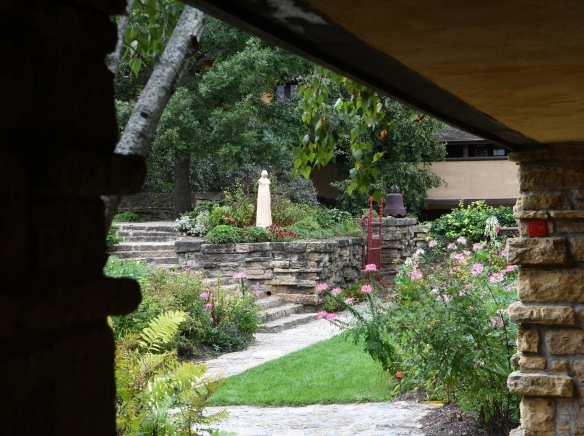




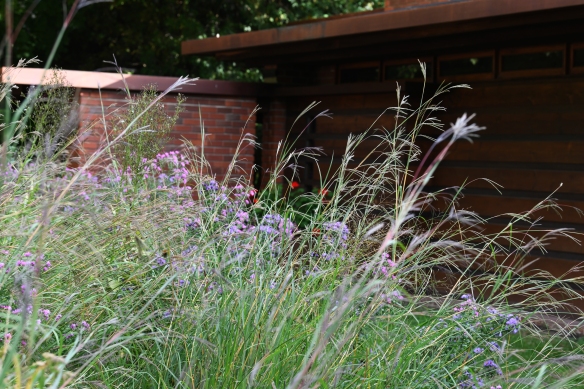


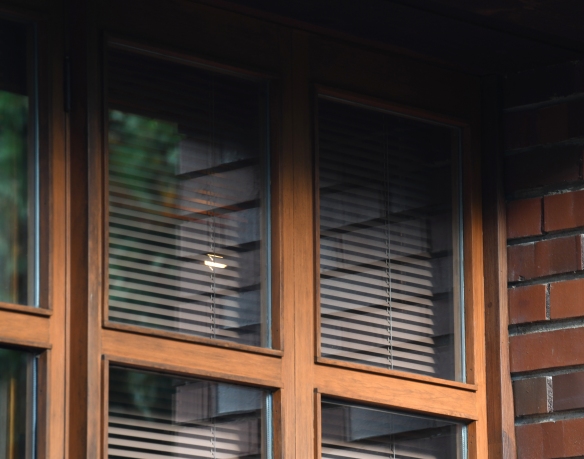
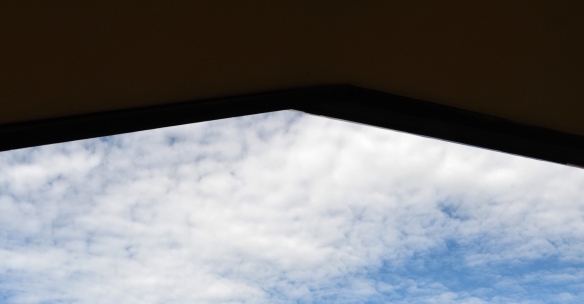

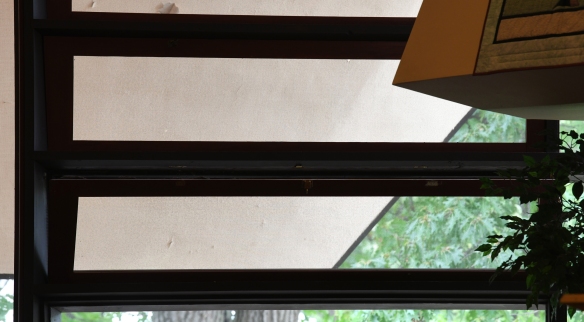
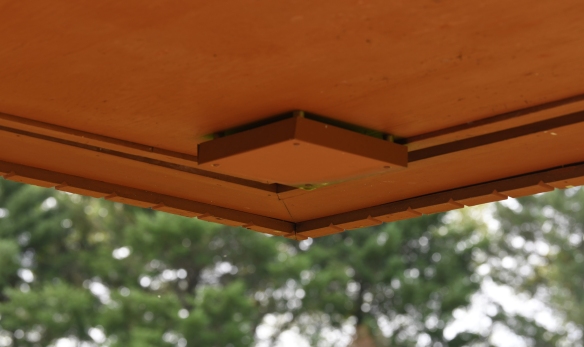
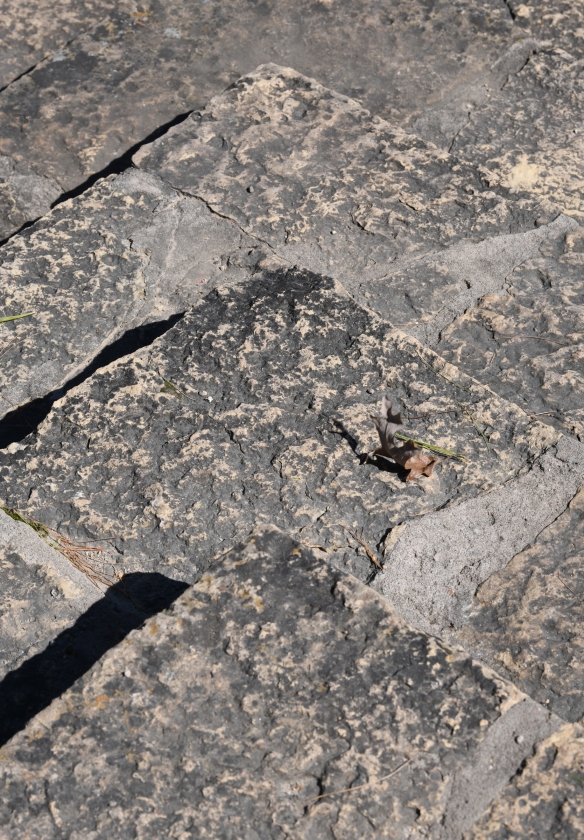
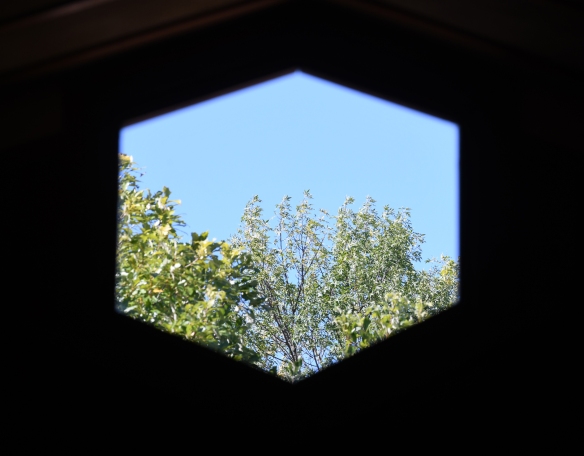





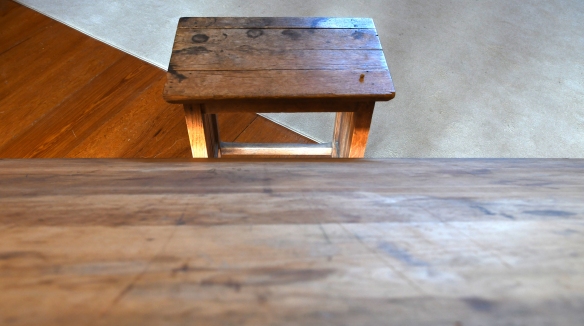
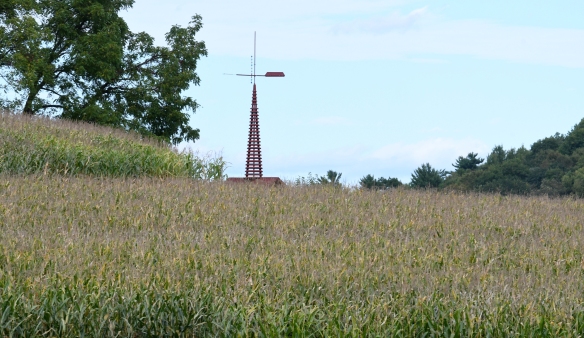

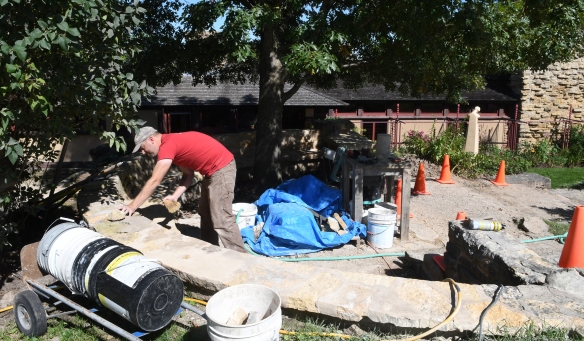

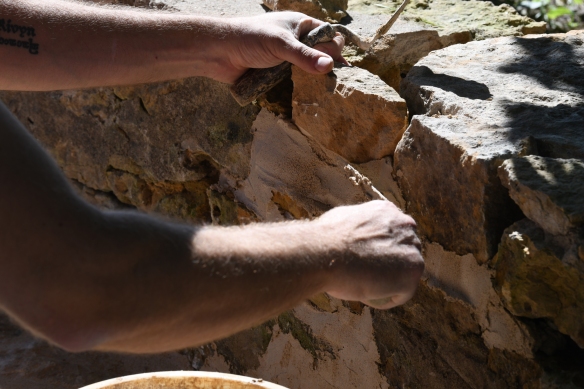

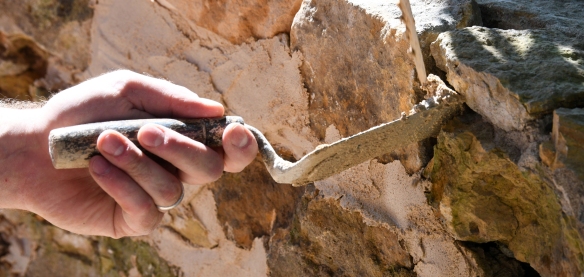
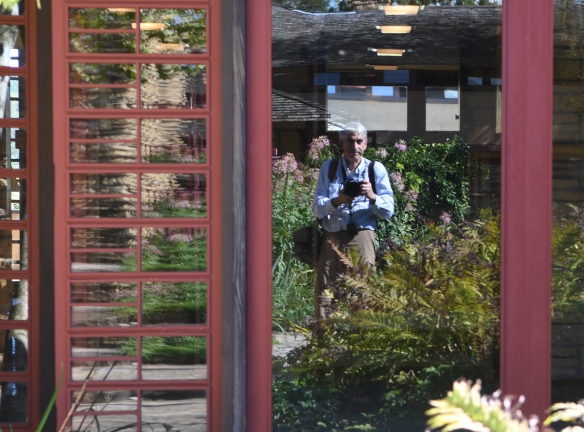









 Libby Garrison of the Marin County Civic Center tells how their mobile app was created.
Libby Garrison of the Marin County Civic Center tells how their mobile app was created. Michael Ditmer (Still Bend) and Heather Sabin (Monona Terrace) confer. Ditmer is the new president of Wright in Wisconsin. Mike Lilek, left rear, of Frank Lloyd Wright’s Burnham Block talks with John Waters Preservation Programs Manager of the Building Conservancy. Kathryn Burton (Gordon House) is also at the table.
Michael Ditmer (Still Bend) and Heather Sabin (Monona Terrace) confer. Ditmer is the new president of Wright in Wisconsin. Mike Lilek, left rear, of Frank Lloyd Wright’s Burnham Block talks with John Waters Preservation Programs Manager of the Building Conservancy. Kathryn Burton (Gordon House) is also at the table. Stuart Graff, President and CEO of the Frank Lloyd Wright Foundation, contributes to the discussion after a presentation. Jim Ladwig, center, (SC Johnson and Son) and Don Dekker (Meyer May House) take notes and listen.
Stuart Graff, President and CEO of the Frank Lloyd Wright Foundation, contributes to the discussion after a presentation. Jim Ladwig, center, (SC Johnson and Son) and Don Dekker (Meyer May House) take notes and listen. Jeffrey Herr (Hollyhock House) and Carrie Rodamaker (Taliesin Preservation)
Jeffrey Herr (Hollyhock House) and Carrie Rodamaker (Taliesin Preservation) Mike Lilek of Frank Lloyd Wright’s Burnham Block in Milwaukee.
Mike Lilek of Frank Lloyd Wright’s Burnham Block in Milwaukee. “The House,” built in the mid-1950s adjacent to Wingspread, became the home of Mr. and Mrs. H.F. Johnson Jr. before they donated Wingspread itself to the newly-created Johnson Foundation in 1959. It has more space for conferences than the Wright-designed Wingspread. It has been said that Mrs. (Irene Purcell) Johnson was never comfortable in Wingspread because it was designed for another woman…Johnson’s wife who died during construction. National Public Radio, the National Endowment for the Arts, the International Court of Justice – and the Frank Lloyd Wright Building Conservancy – are among the entities that evolved from Johnson Foundation conferences.
“The House,” built in the mid-1950s adjacent to Wingspread, became the home of Mr. and Mrs. H.F. Johnson Jr. before they donated Wingspread itself to the newly-created Johnson Foundation in 1959. It has more space for conferences than the Wright-designed Wingspread. It has been said that Mrs. (Irene Purcell) Johnson was never comfortable in Wingspread because it was designed for another woman…Johnson’s wife who died during construction. National Public Radio, the National Endowment for the Arts, the International Court of Justice – and the Frank Lloyd Wright Building Conservancy – are among the entities that evolved from Johnson Foundation conferences. 